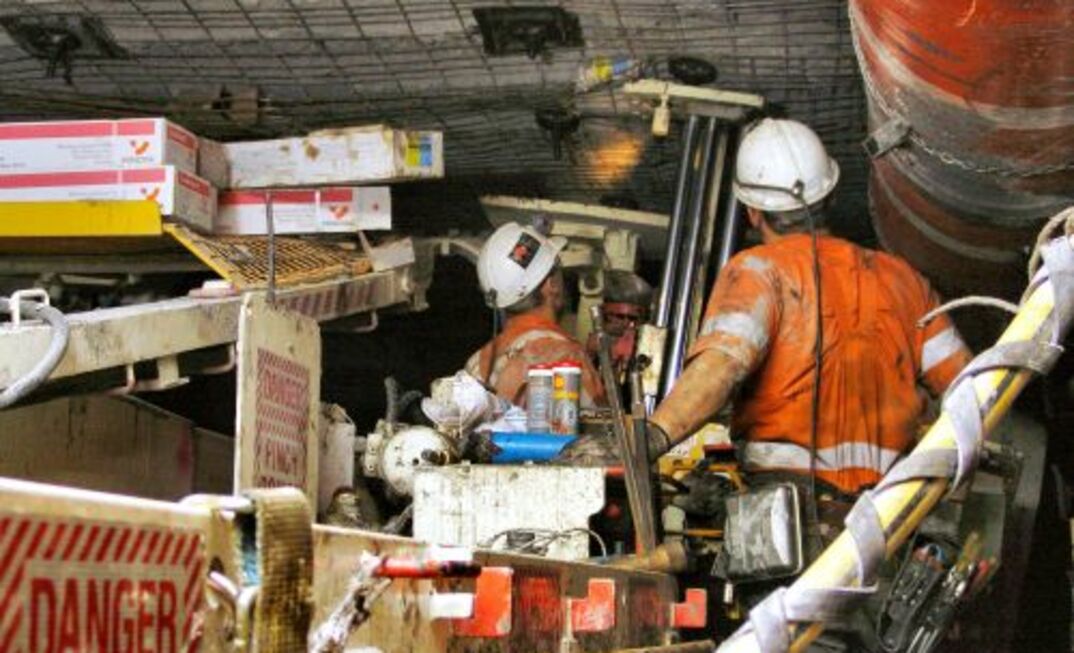Published in June 2007 Australian Longwall Magazine
No mine wants a roof fall. Yet, even with a greater focus on higher roof support density there are still instances of major and potentially catastrophic roof falls in longwall mining operations in both Australia and abroad.
So what progress has the industry made in preventing roof falls and improving the way they are managed? For one, there is real-time monitoring. Over the past few years, and especially since numerous and inexpensive monitoring software entered the market, mines have picked up their game in this area.
“Cheap and reliable roof monitoring equipment allows a large number of monitoring stations to be installed. The simplicity of these instruments and widespread knowledge of spreadsheet software means that results can be read and interpreted on a ‘shiftly’ basis and do not necessarily have to be sent off-site for expert interpretation,” Strata Engineering Australia CEO Tim Watson said.
“Roof mapping and recording of roof behaviour has also developed considerably in recent years such that predictions of likely future roof behaviour can be projected forward to the next panel, thus enabling at least a preliminary evaluation of future roof support requirements.”
Snowden’s Kevin Irving added: “Managing real-time information from a longwall powered support system can give forewarning of roof falls; therefore one can develop and provide time to implement control measures to prevent falls from occurring. Similarly real-time, automated electronic information from roof movement instrumentation should become the norm rather than relying on the human factor of reading telltales and manual interpretation from similar devices.”
It is not only about real-time monitoring, but also the implementation of strata management systems that have come a long way.
“Adoption of a systematic approach incorporating comprehensive support rules, hazard management plans and trigger response plans have all been aimed at preventing the falls in the first place,” Minarco, MineConsult, Runge Company said.
Technology, as is the case of most improvements in the 21st century, has also played a part. According to SRK Consulting, technologies such as thermal infrared cameras, ground penetrating radar and ultra wide band technology, to name a few, allow a more preventative approach to longwall cutting and limiting roof exposure.
Technologies like gamma-ray detection have already been proven successful in various continuous miner applications. Pro-active technologies through seismic detection have also been developed to act as warning systems, and recent live tests at Xstrata’s Ulan Coal by the CSIRO proved promising, SRK said.
Minarco, MineConsult, Runge Company added that better technologies, such as long tendon installation from the continuous miner, have emerged for supporting the ground and reducing the likelihood of roof falls. Also, newer materials, such as Rocsil, and greater levels of experience from the application of older technologies, such as PUR, have reduced the recovery times for falls, as well as drastically reducing safety risks for operators.
While technology has pushed roof fall prevention and management to new levels, the importance of understanding strata can not be underestimated.
“We think greater emphasis needs to be placed on understanding the mechanism and reasons for failure rather than just implementing a denser support pattern. Increasing support is putting greater stress on development rates,” said Mining Consultancy Services’ Chris Wilkinson.
IMC Mining Solutions principal consultant Chris Hanson concurred: “Appropriate training and communication to the face crews to understand the nature, relevance, required monitoring and response to particular hazards has assisted in minimising the potential for roof/rib failures.”
Hanson added that hazard management plans in the event of a roof fall were critical. “Onsite hazard management and strata control hazard management plans have unquestionably had a beneficial impact in minimising the potential for roof/rib failure through improving the communication of hazardous areas in advance of mining, conditional monitoring and triggering suitable responses,” he said.
“Defining precisely who, what, and importantly when required responses should be triggered has in IMC’s operational experience proven to be effective in minimising the potential for roof and/or rib failure. This is the case on both on development and under the impact of abutment loading.”
John T Boyd Australia managing director Ian Alexander also emphasised the importance of management. “Management reduces the probability of falls on the face by minimising tip to face distance and selecting appropriate shields. Shield manufacturers have helped in this regard by increasing pontoon foundation loading, increasing tip loads, stabilising the shield, increasing support density and speed of advance,” Alexander said.
“Management has also improved its understanding of conditions and their impact on longwall operations, including evaluation of conditions that cannot be mined through, in which case arrangements are made to improve ground conditions or to move around the feature.
“Once a fall on the face occurs, quick response time is needed to minimise face deterioration. Supervisors must be involved in personnel and contractor management. Techniques include surface and in-mine drilling and pumping of micro-fine cements and grouts, PUR injection, and cavity fill foam injection, which are now undertaken immediately after the fall.”
























